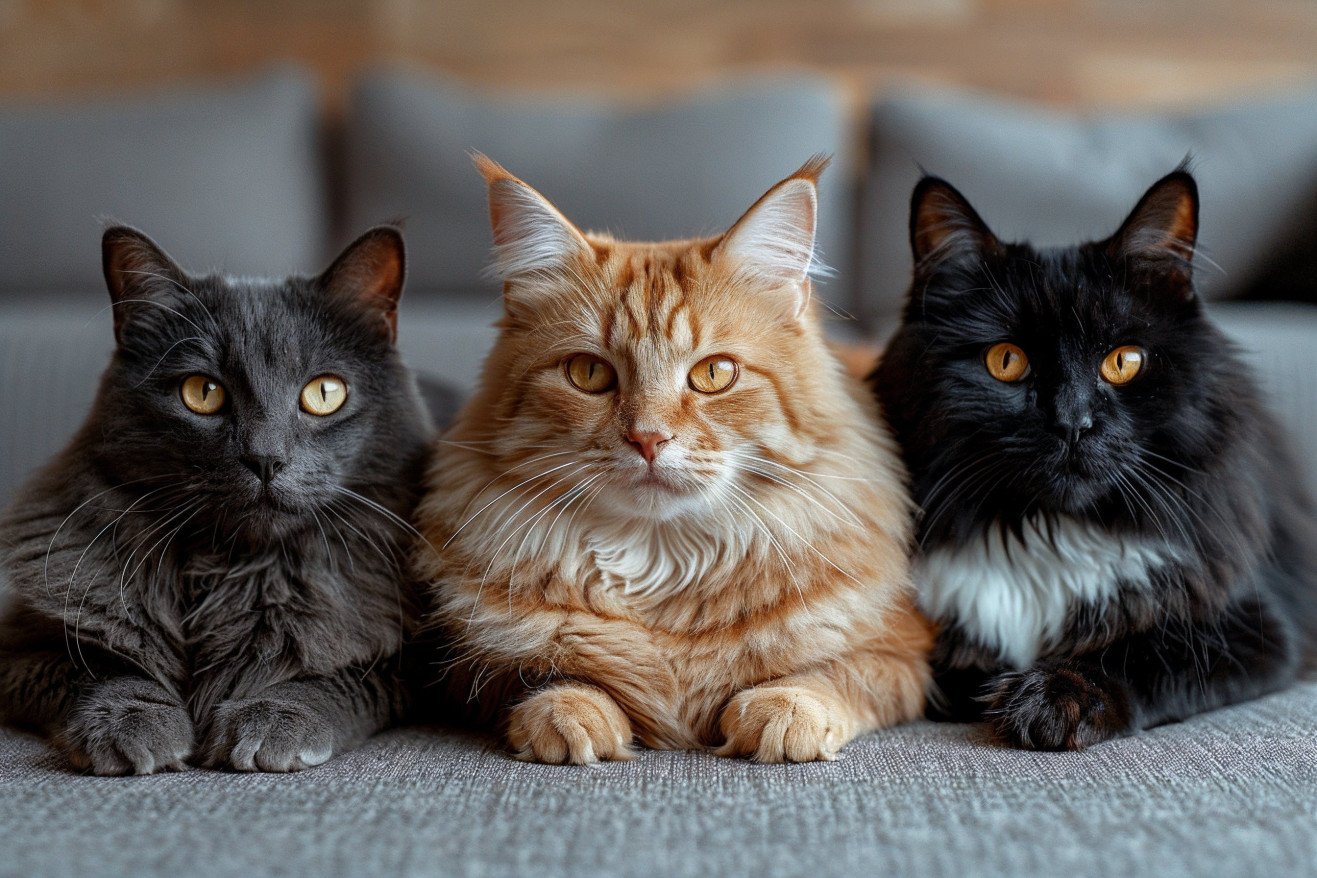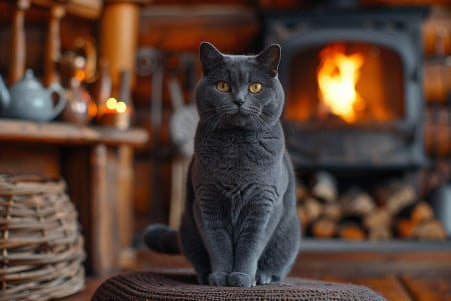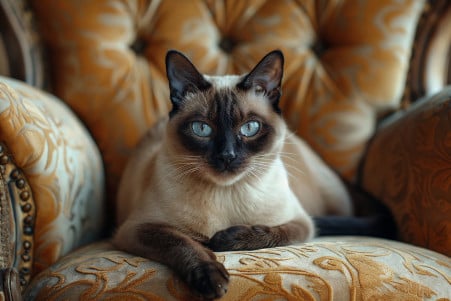How Many Cat Breeds Are There? A Complete List
2 May 2024 • Updated 2 May 2024

If you’ve ever been interested in the wide variety of cats that exist and wanted to know exactly how many cat breeds there are, you’re in luck. There are approximately 73 cat breeds that are recognized by the major cat registries, including the International Cat Association (TICA) and the Cat Fanciers' Association (CFA). However, the number grows to almost 200 when you count breeds that are experimental or are only recognized by smaller registries.
To help you better understand this interesting subject, we’ve put together a complete breakdown of cat breed classifications. By combining information from a number of reputable sources and experts, we hope to give you a comprehensive look at the many cat breeds that are part of our world. From popular breeds to the most unusual and rare cats, we’ll look at what makes each breed special, where they come from, and how new breeds are recognized and established.
How many cat breeds are there?
Major Registries and the Breed Recognition Process
The International Cat Association (TICA) is the largest registry of pedigreed cats in the world and currently recognizes 73 breeds for championship competition. However, new breeds must go through a years-long process to gain full recognition. New breeds are initially accepted into the Advanced New Breeds class, which allows them to be shown but not titled. Once they have met specific criteria established by TICA's Breed Committees, including having a certain number of breeders and providing documentation on pedigree and genetics, they can move up to the Championship class and receive full recognition as a breed.
The Cat Fanciers' Association (CFA) has an even more rigorous process and currently recognizes just 45 breeds. As described in a Vetstreet article, typical requirements include having a certain number of breeders, extensive documentation on the breed's history and genetics, and showing the breed at a certain number of cat shows over a period of several years.
Other major cat registries, including FIFe and the Governing Council of the Cat Fancy (GCCF) in the UK, also have their own breed standards and recognition processes, although the specifics of what's required can differ. The GCCF has even gone so far as to release Standard Operating Procedures that detail the criteria for accepting a new breed.
While the exact requirements can differ from registry to registry, they all focus on making sure that new breeds are genetically unique, have a stable population of breeders and examples, and meet standards for health and predictable physical traits before they are fully recognized. This strict process is designed to maintain the integrity of pedigreed cat breeds.
Most Popular Cat Breeds
The Cat Fanciers' Association compiles a list of the most popular cat breeds around the world each year, and it includes a mix of well-known and more obscure breeds. The list includes the Ragdoll, Maine Coon, Devon Rex, Exotic Shorthair, Persian, British Shorthair, and Siamese.
Each of these breeds has its own unique physical characteristics, personality traits, grooming needs, and suitability as a pet. For example, the Ragdoll is known for its striking blue eyes and tendency to go limp when picked up, while the Maine Coon is a large, friendly cat with a thick, water-repellent coat. According to PetScreening, the Exotic Shorthair is a relaxed lap cat, and the British Shorthair is a calm, quiet cat.
In addition to these purebred cats, domestic shorthair and longhair cats are also among the most popular and adaptable pets. As The Dog People by Rover.com explains, these "mutt" cats come in a variety of colors and coat lengths and are thought to have been domesticated as far back as 2000 BC. A cat's personality, grooming needs, and size all play a role in determining its popularity as a pet.
Rare and Unique Cat Breeds: A Look at the Unusual
Since only 2-4% of cats are purebred, all pedigreed cats are technically rare according to the Cat Fanciers' Association. Some of the rarest breeds include the Turkish Van, LaPerm, Chartreux, Tonkinese, Egyptian Mau, and Sokoke Cat. As noted in Rover.com's piece, many of these breeds have unusual physical characteristics, such as hairless coats, curly fur, or unique coat patterns and colors.
Many rare breeds are also from specific parts of the world and have small populations, sometimes numbering fewer than 100 in North America. For example, the Sokoke Cat is the rarest domestic cat breed in the world and hails from the forests of Sokoke in eastern Kenya. Meanwhile, the Peterbald, Lykoi, and Minskin, which are discussed in Bored Panda's list, don't look like your typical domestic cat and are sure to turn heads.
Even though they are rare, these unusual cat breeds demonstrate the amazing diversity of the feline species. Learning about the history and unique characteristics of these lesser-known breeds can help you gain a deeper understanding of the variety of cat breeds that exist today.
Breed Classifications: Coat Types, Genetic Backgrounds, and Origins
Cat breeds are classified based on a number of factors, including coat type, genetic background, and geographic origin. According to How Many Cat Breeds Are There in the World? (2024 Guide), one of the most common ways to classify breeds is by whether they are long-haired or short-haired.
In addition to coat type, breeds are also classified based on their genetic background. As the Purina article on rare and unusual cat breeds notes, "natural breeds" such as the Siamese and Persian are the result of natural selection, while "mutation breeds" such as the Sphynx are the result of genetic mutations. "Hybrid breeds" such as the Bengal are the result of a cross between domestic cats and wild species, and "crossbreed breeds" are the result of a cross between two or more breeds.
In addition to these genetic classifications, some breeds, such as the Japanese Bobtail and Norwegian Forest Cat, as noted in the Purina article, are the result of natural selection in specific geographic areas and have adapted to the local environment. Knowing these different classifications is important because it helps us understand the wide variety of breeds and the different factors that have shaped their histories.
Genetic Diversity and Breed Origins: What the Research Says
In recent years, genetic research has shed light on the relationships and origins of different cat breeds. For example, a study published in PMC found that most breeds were derived from random-bred cats from the regions where they were said to have originated. However, there were also some breeds that didn't genetically group with the cats from their supposed regions, indicating that there were discrepancies between the stated and actual origins of some breeds.
In total, the cats were divided into 20 genetic clusters, with 14 breeds having their own unique cluster. However, 8 breeds were grouped into 4 pairs that couldn't be differentiated genetically. The study also showed that cat breeds have less genetic diversity than random-bred cats, with some breeds, such as the Burmese and Singapura, having particularly low diversity.
These results provide important information about the genetic makeup and origins of different cat breeds, which in some cases contradicts the stories that have been told about how different breeds were developed and where they came from. By clarifying these genetic connections, the studies help us understand the rich and complex nature of feline diversity.
Conclusion: Embracing the Rich Diversity of Cat Breeds
The world of cat breeds is wide and varied, with approximately 73 breeds recognized by major cat registries like TICA and CFA and nearly 200 breeds overall when including those that are still being established or are only recognized by certain organizations.
Cat breeds can be classified in a number of ways, including by coat type (long-haired or short-haired), genetic origin (natural, mutation, hybrid, or crossbreed), and geographic location. For example, the Japanese Bobtail and Norwegian Forest Cat are breeds that have evolved to suit the conditions of a particular region.
The process of establishing a new breed is highly regulated and can take several years due to the strict documentation, genetic, and exhibition standards set by organizations like TICA and CFA. However, these standards are in place to ensure the integrity of pedigreed cat breeds.
Although only 2-4% of cats in the United States are purebred, these pedigreed cats can be considered rare. Some of the rarest cat breeds include the Turkish Van, LaPerm, and Sokoke Cat, many of which have unusual physical characteristics like hairlessness or distinctive coat patterns.
Genetic research has led to a better understanding of the relationships and origins of cat breeds and has even shown that some breeds’ genetic backgrounds don’t match their documented pedigrees. This work has helped to shed light on the sometimes confusing and always intriguing world of cat breeds.


